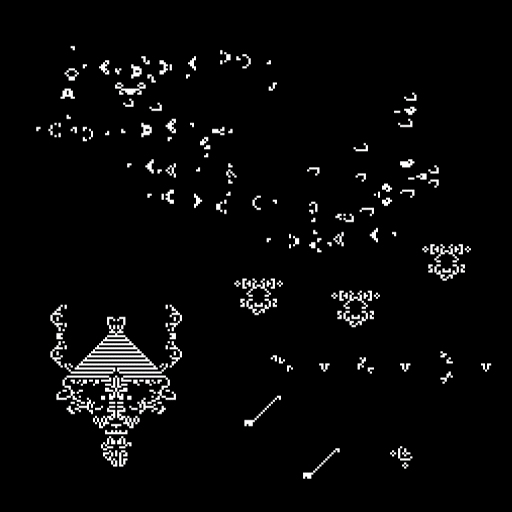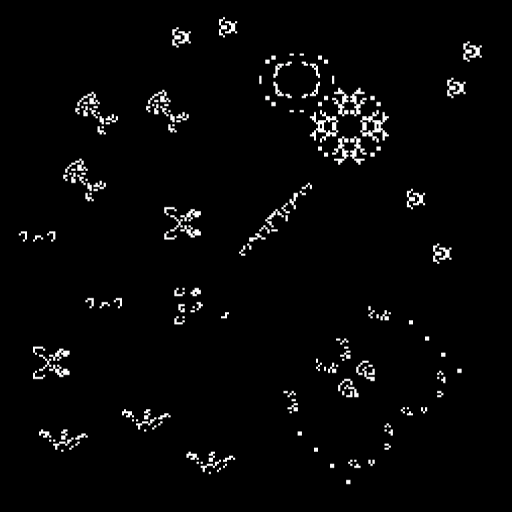What’s up with the background?
You might’ve noticed something unfolding in the background.
A soft flicker. A slow rhythm.
An evolving constellation of cells—appearing, vanishing, moving like thought.
There’s something uncannily familiar about it.
It mirrors the way ideas grow, the way teams shift, the way systems bend to survive.
It’s not just animation—
It’s a living metaphor for how the best projects evolve:
with a few environmental constraints, a spark of inspiration, and the freedom to run.
It’s not a video. It’s not a loop.
It’s Conway’s Game of Life—a 50-year-old mathematical simulation.
A pocket universe unfolding right in your browser.
Rules of the Game
The Game of Life runs on a grid of square cells. Each one is either alive or dead.
With each generation, the entire grid updates based on three simple rules:
Birth: A dead cell with exactly three living neighbors springs to life.
Survival: A living cell with two or three neighbors stays alive.
Death: Too few, and the cell fades. Too many, and it burns out.
It’s a zero-player game—once the simulation starts, it runs itself.
No user input. No randomness after launch.
From “gliders” to “oscillators”, these basic rules yield patterns that feel… familiar...
What We Changed
Conway’s original world was black and white—on or off, live or dead.
We made a few simple tweaks:
Color: Cells are shaded by their local density—cool tones in sparse zones, warm tones in crowded clusters. It turns logic into artistic texture.
Ghost trails: When a cell dies, it doesn’t disappear right away. It lingers, fading out over time—like a memory, or the influence of generations past.
Logo seeding: The simulation starts with our logo embedded in the grid.
Stardust: Each page load sprinkles a few random sparks of life—ensuring that no two visits ever look the same.
These changes don’t alter the rules—They just add an artistic element that breathes more life into the logic.
What It Shows Us
Wait long enough, and patterns start to emerge.
You’ll see gliders—tiny creatures that crawl diagonally across the screen.
Oscillators—cells pulsing back and forth in rhythm.
Still lifes that hold their shape, and chaotic bursts that collapse just as fast as they expand.
All of it built from just three fundamental rules, local logic, and time.
It’s hard to watch and not see similarities to patterns we experience in real life:
How teams form and dissolve
How ideas spread, evolve, or fizzle
How systems self-organize in surprising ways
It’s a strange kind of mirror—showing us how much can emerge from so little.
Why we built it
At KNAX, we believe the best systems aren’t forced—they’re discovered.
Because great projects don’t need micromanagement—they need a clear frame and the freedom to move.
Because art and engineering aren’t opposites—they’re partners.
And because sometimes, the best way to show the world how you think…
is to let it quietly run in the background.
Want to learn more?
“The Blackberry of pixel civilizations.”
Born with a head start, burst onto the scene, but failed to adapt to changing conditions.
“The Patagonia of cellular automata.”
Low-key, long-lasting, and deeply sustainable.
It doesn’t chase trends—it builds systems that work, adapt, and keep going.


